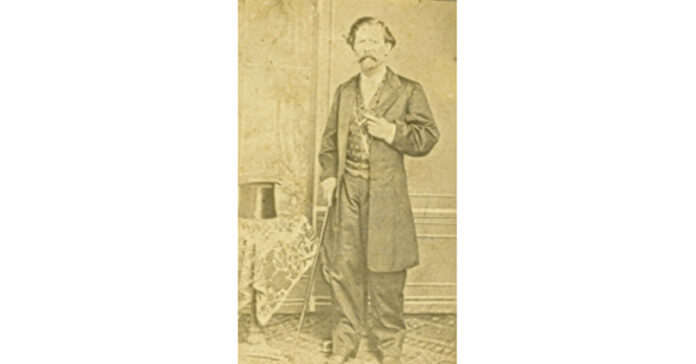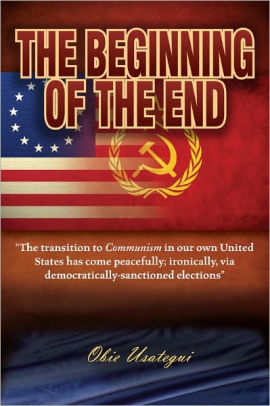Facebook is Trying to Censor Us
Don't let Facebook determine what you are allowed to see. Subscribe to our newsletter to get notified via email whenever we release new articles. Click here to subscribe.
Después de la celebración del 10 de Octubre, Grito de Yara, desearía recordar el suceso del 13 de Octubre del 1868.
Las familias “criollas”, la mayoría parte de una sociedad pudiente e importante en la provincia de Oriente, se estuvieron reuniendo para discutir el futuro de Cuba y comenzar la gesta independentista.
Una de estas familias, terratenientes y ganaderos, fue la de apellido Milanés. Mi bisabuelo José Antonio Milanés de Céspedes, era el mayor de los hermanos hijos de José A. Milanés y Ramírez de Arrellano y Úrsula Teresa de Céspedes, prima lejana pero muy querida de Carlos Manuel.
Después de amplias discusiones la pasión y palabra de Carlos Manuel de Céspedes convenció a los presentes reunidos en la finca de José A. Milanés, de que era el momento de actuar. Ese día en su finca “el Potrero” se encontraban con sus hermanos Luis Felipe, Rafael, Jorge Carlos Milanés de Céspedes, Carlos Manuel de Céspedes, Donato Mármol, casado con una hija de José Antonio, Guadalupe Milanés y Bazán “Tía Pupa”, Francisco Vicente Aguilera, gran amigo de Donato, Francisco “Pancho” Maceo, Manuel de Jesús Calvar, Salvador Cisneros, Carlos Loret de Mola, Julio Grave de Peralta, y Jaime Santisteban, entre otros patriotas.
Se decidió una fecha que Carlos Manuel de Céspedes decidió adelantar por temor de que los españoles habían sido avisados del levantamiento.
La finca El Potrero fue a su vez lugar de dos sucesos que fueron en retrospectiva trascendentales en nuestra historia.
Un día se presento un joven pidiendo incorporarse a los planes que se gestaban. Este joven que se convirtió por su valentía, liderazgo e inteligencia rápidamente en General, se llamaba Calixto García.
También, portando una recomendación de Carlos Manuel de Céspedes que lo recomendaba como Coronel, llego un dominicano que fue rechazado por Donato, nombrado jefe militar de la región, con las palabras “de mandones sobramos”, y que fue refutado por su suegro José Antonio Milanés con “mandones, pero de pelea no sabemos jota y el sí”, llamado Máximo Gómez.
Al enterarse los allí reunidos del adelanto del movimiento, se producen altercados entre los que consideraban la acción de Céspedes inapropiada, pero triunfo el espíritu patriótico y las ansias de libertad y el 13 de Octubre con unos pocos rifles se unieron a la pelea, tomando Jaguaní, haciendo prisionero al Teniente Gobernador Francisco Muguruza Lersundí, reforzándose con hombres y armas para unirse con la tropas de Carlos M. de Céspedes, finalmente logrando conquistar Bayamo.
El Coronel Quiroz en camino a Bayamo se encontró con 200 mambises al mando de Máximo Gómez. Gómez ordeno un ataque que los españoles aterrorizados por la tropa compuesta de muchos negros liberados, a galope, con alaridos y armas blancas, fueron derrotados aunque eran superiores en número y armamentos.
Fue cuando se ejecuto la primera de las famosas “cargas al machete”. El 10 de Octubre se inicio esta página de nuestra historia, pero el 13 se incorporaron a la lucha figuras como Máximo Gómez, Calixto García, Aguilera, Mármol y Maceo.
English Translation:
October 13, 1868
After the celebration of October 10, Grito de Yara, I would like to remember the event of October 13, 1868.
The “Creole” families, the majority part of a wealthy and important society in the Oriente province, were meeting to discuss the future of Cuba and begin the independence struggle.
One of these families, landowners and ranchers, was the one with the surname Milanés. My great-grandfather José Antonio Milanés de Céspedes, was the eldest of the siblings of José A. Milanés and Ramírez de Arrellano and Úrsula Teresa de Céspedes, a distant but very dear cousin of Carlos Manuel.
After extensive discussions, the passion and word of Carlos Manuel de Céspedes convinced those present, gathered at the José A. Milanés farm, that it was time to act. That day in his farm “el Potrero” they were with his brothers Luis Felipe, Rafael, Jorge Carlos Milanés de Céspedes, Carlos Manuel de Céspedes, Donato Mármol, married with a daughter of José Antonio, Guadalupe Milanés and Bazán “Tía Pupa”, Francisco Vicente Aguilera, Donato’s great friend, Francisco “Pancho” Maceo, Manuel de Jesús Calvar, Salvador Cisneros, Carlos Loret de Mola, Julio Grave de Peralta, and Jaime Santisteban, among other patriots.
A date was decided that Carlos Manuel de Céspedes decided to advance for fear that the Spanish had been warned of the uprising.
The El Potrero farm was in turn the site of two events that in retrospect were momentous in our history.
One day a young man appeared asking to join the plans that were brewing. This young man who quickly became a General through his bravery, leadership and intelligence was called Calixto García.
Also, bearing a recommendation from Carlos Manuel de Céspedes who recommended him as Colonel, a Dominican arrived who was rejected by Donato, appointed military chief of the region, with the words “we are overly bossy”, and which was refuted by his father-in-law José Antonio Milanés with “bossy, but we don’t know how to fight a jack and a yes”, called Máximo Gómez.
When those gathered there learned of the advancement of the movement, there were altercations between those who considered Céspedes’s action inappropriate, but the patriotic spirit and the desire for freedom triumphed and on October 13 with a few rifles they joined the fight, taking Jaguaní , taking Lieutenant Governor Francisco Muguruza Lersundí prisoner, reinforcing himself with men and weapons to unite with the troops of Carlos M. de Céspedes, finally managing to conquer Bayamo.
Colonel Quiroz on the way to Bayamo met 200 mambises under the command of Máximo Gómez. Gómez ordered an attack that the Spaniards, terrified by the troop composed of many liberated blacks, galloping, with screams and bladed weapons, were defeated although they were superior in number and armaments.
It was when the first of the famous “machete charges” was executed. On October 10, this page of our history began, but on October 13, figures such as Máximo Gómez, Calixto García, Aguilera, Mármol and Maceo joined the fight.



 When you subscribe, you’ll be notified directly via email every time we post a new article here on the Patriot Observer. I’ll also email you a digital copy of my book, “The Beginning of the End”, which has, unfortunately, become somewhat of a Crow’s Mouth in the way it predicted the path that this country would take under Barack Obama – the very same one that is now being continued by his lackey, Joe Biden.
When you subscribe, you’ll be notified directly via email every time we post a new article here on the Patriot Observer. I’ll also email you a digital copy of my book, “The Beginning of the End”, which has, unfortunately, become somewhat of a Crow’s Mouth in the way it predicted the path that this country would take under Barack Obama – the very same one that is now being continued by his lackey, Joe Biden.